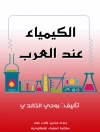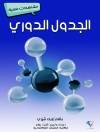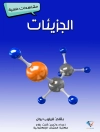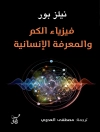Continuous pharmaceutical manufacturing is currently receiving much interest from industry and regulatory authorities, with the joint aim of allowing rapid access of novel therapeutics and existing medications to the public, without compromising high quality. Research groups from different academic institutions have significantly contributed to this field with an immense amount of published research addressing a variety of topics related to continuous processing. The book is structured to have individual chapters on the different continuous unit operations involved in drug substance and drug product manufacturing. A wide spectrum of topics are covered, including basic principles of continuous manufacturing, applications of continuous flow chemistry in drug synthesis, continuous crystallization, continuous drying, feeders and blenders, roll compaction and continuous wet granulation.The underlying theme for each of these chapters is to present to the reader the recent advances in modeling, experimental investigations and equipment design as they pertain to each individual unit operation. The book also includes chapters on quality by design (Qb D) and process analytical technology (PAT) for continuous processing, process control strategies including new concepts of quality-by-control (Qb C), real-time process management and plant optimization, business and supply chain considerations related to continuous manufacturing as well as safety guidelines related to continuous chemistry. A separate chapter is dedicated to discussing regulatory aspects of continuous manufacturing, with description of current regulatory environment quality/GMP aspects, as well as regulatory gaps and challenges.
Our aim from publishing this book is to make it a valuable reference for readers interested in this topic, with a desire to gain a fundamental understanding of engineering principles and mechanistic studies utilized in understanding and developing continuous processes. In addition, our advanced readers and practitioners in this field will find that the technical content of Continuous Pharmaceutical Processing is at the forefront of recent technological advances, with coverage of future prospects and challenges for this technology.قائمة المحتويات
Basic Principles of Continuous Manufacturing.- Continuous Reactors for Pharmaceutical Manufacturing.- Understanding Residence Time, RTD, and Impact of Surge Vessels.- Practical Considerations for Continuous Drug Substance Manufacturing.- Continuous Crystallization: Equipment and Operation.- Continuous Feeding-Blending in Pharmaceutical Continuous Manufacturing.- Recent Progress in Roll Compaction Process Development for Pharmaceutical Solid Dosage Form Manufacture.- Continuous wet granulation processes.- Fluidized Bed Drying.- Statistical Methods in Quality by Design and Process Analytical Technologies for continuous processes to enable real-time release.- Active Process Control in Pharmaceutical Continuous Manufacturing-The Quality by Control (Qb C) Paradigm.- Real-time Optimization in Pharmaceutical Manufacturing.- Safety Guidelines for Continuous Chemistry Experimental Work in the Laboratory.- Evaluating the Busieness/Supply Chain Benefits of Continuous Processing in Pharmaceuticals.- Regulatory Considerations for Continuous Manufacturing.
عن المؤلف
Zoltan K Nagy is a Professor of Chemical Engineering in the Davidson School of Chemical Engineering at Purdue University, USA and holds a research professor position at Loughborough University, UK. His research focuses on pharmaceutical systems engineering, advanced process control, crystallization modeling and control approaches and advanced control of particulate systems. He is an international expert in process intensification and advanced control application in integrated batch and continuous pharmaceutical manufacturing systems. He has received awards in the areas of crystallization and control from IEEE, IFAC, European Federation of Chemical Engineering, Royal Academy of Engineering and the European Research Council and he was the recipient of the AICh E’s Excellence in Process Development Research Award (2018) and the Pharmaceutical Discovery Development and Manufacturing (PD2M) Forum Award for Outstanding Contribution to Qb D for Drug Substance (2019).
Arwa El Hagrasy is currently Acting Quality Assessment Lead, Office of Pharmaceutical Manufacturing Assessment, OPQ, CDER, FDA. Arwa has been with FDA for over 6 years and has reviewed a wide variety of drug product applications submitted to the Agency, including those implementing emerging technologies and advanced pharmaceutical manufacturing. Arwa has vast experience in industry and academia, with focus on the implementation of process analytical technology tools and continuous manufacturing in the pharmaceutical industry. Arwa received her B.S. in Pharmaceutical Sciences from Cairo University, Egypt, her Ph.D. in Pharmaceutical Sciences from Duquesne University in Pittsburgh, did a post-doctoral appointment in the Chemical Engineering Department at Purdue University, and held Associate Professor position at Faculty of Pharmacy, Cairo University.
Jim Litster is Professor and Head of the Chemical and Biological Engineering Department at the University of Sheffield, following previous academic appointments at Purdue University (2007-2015) and The University of Queensland (1987-2007). His research area is Particulate Products and Processes focusing on production of particles and particulate delivery forms with well controlled size and morphology from sub-micron to millimeter scale using processes such as wet granulation, crystallization and spherical agglomeration. He is an international leading expert on wet granulation with over 30 years experience in the field. A major portion of his current research is in support of continuous manufacturing of pharmaceutical dosage forms. Jim is a Fellow of the Australian Academy of Technological Sciences and Engineering. He has received several awards internationally for his work, including the Pharmaceutical Discovery, Development and Manufacturing Forum Award from the AICh E in 2015.












